10 great new audio streamers to blast the wires from your home
Get with the program and set your home audio free
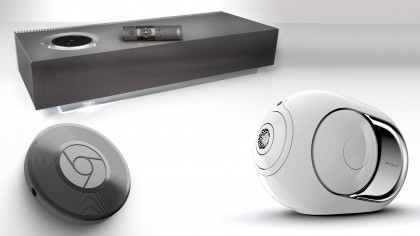
The future was ages ago
Still have wires trailing around your house between amplifiers and speakers? Either you enjoy that retro wonderland, or it's time to think about upgrading to a wireless system.
And if you were thinking that going wireless was the future of home audio, think again – it's been the present for five-plus years now.
The wireless world has developed rapidly in those years, though. Not only are there now more options than ever before, there are even new ones that will allow you to hold onto your pre-wireless gear.
We're going to look at 10 of the best ways to turn your home audio into a wireless soundscape, from the cheap and accessible to ultra-high-end solutions for those with a lot of cash to spend.
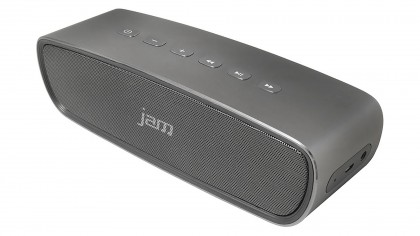
Jam Heavy Metal
Price: £65 (Amazon)
Let's start with the trusty standard, the portable Bluetooth speaker. A good entry-level pick here is one you may not have stumbled across: the Jam Heavy Metal.
This tiny little £65 Bluetooth speaker can square up to the £160 Bose SoundLink Mini and not come off too badly. They look similar because this size and style of speaker has become a category all of its own.
It's about as small as a speaker can get while still sounding massive, because it uses something called a passive radiator to magnify the bass frequencies from the two active (or normal, in other words) drivers. This little thing sounds great, and its combo of integrated battery and small stature make it the perfect speaker to take around the house.
Sure, you can 'go multi-room', but you'll save an awful lot of cash if you just get one little speaker you can take from room to room.
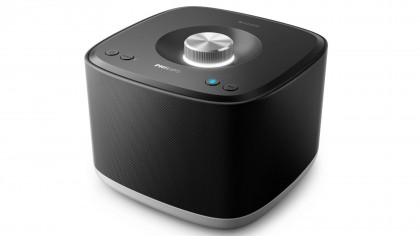
Philips Izzy BM5
Price: £99 (Amazon)
Still want multi-room? One of the simplest systems around is Philips Izzy. It's a wireless audio family for your home that doesn't rely on smartphone apps and a confusing Wi-Fi setup process – anyone who has tried and failed to set up a multi-room system before will understand the appeal of this.
Instead of setting up Izzy with an app, you do it using a series of button-presses on the speakers. It's a more mechanical approach, one that enables you to group-up speakers to stream the same tunes in multiple rooms without having to deal with too much software.
The actual interaction between your phone or tablet and the speakers is limited to a Bluetooth hook-up, while the speakers communicate over their own Wi-Fi network, invisibly. Clever stuff.
Izzy is an expandable wireless system, but you can get started now with the Izzy BM5.
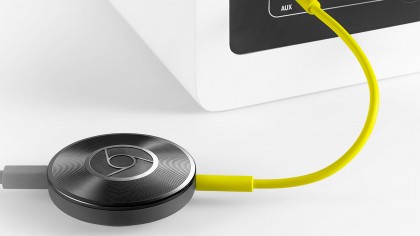
Chromecast Audio
Price: £30 (Currys)
If you already have a speaker setup but it's starting to look like a relic of the past, don't feel that you have to suddenly switch over to an expensive Sonos get-up. The £30 Chromecast Audio will sort you out.
It acts a bridge between any Cast-enabled app and pretty much any hi-fi. You can pick between phono, 3.5mm and optical inputs – as long as your gear has one of these, you're in. If your setup doesn't have one of those, we honestly have no idea what you're using.
Key streaming services like Spotify are Cast-supported across Android and iOS, so going wireless requires little more than a swipe and a tap. There's a dedicated Wikipedia page you can reference if you want an idea of the breadth of supported streaming apps.
This is Wikipedia, though, so double check before basing your buying decision on anything there.
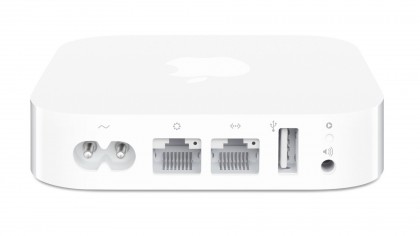
Apple AirPort Express
Price: £79 (John Lewis)
You might think the Apple TV would be the equivalent to Chromecast Audio. But it's not. Not any more.
Apple got rid of the audio connector in the latest 4th-generation Apple TV, in what some people might consider a grand case of dumbing down. These days, for AirPlay-enabled audio loveliness you'll want to get hold of an AirPort Express.
It features a 3.5mm/optical output, enabling you plug it into just about any audio system. The main job of an AirPort is to serve as a wireless access point, enabling you extend your wireless network, but it's also what Apple household audio streamers need.
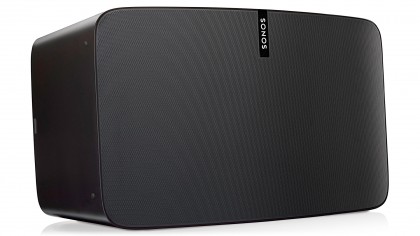
Sonos Play:5 and Play:1
Price: From £159 (John Lewis)
Sonos has been the main name in multi-room streamed audio for years, and it has only strengthened its grip with its last two releases. We're talking about the Sonos Play:5 and the dinky Play:1.
This pair live up to the sound quality on offer from the brand elsewhere, with pretty much the best audio you can get at their respective size and price. They sound amazing, in other words. The Play:1 is a small pillar speaker, of a size you might put on your bedside table. It costs between £150 and £170 depending on where you look.
Sonos's larger, pricier Play:5 is £430, and is the sort of speaker you might make the centre of your home setup. It's that good, and a lot better than the old Play:5 Sonos used to sell.
Unlike a lot of the newer multi-room systems, Sonos's is totally closed-off, meaning you need to use its own app to pick what tunes you want to play. Loads of services are supported, though – check out the Sonos website for the full list.
Other than the above restriction, audio nuts need to consider that it currently offers no Hi-Res support. There is a £599 soundbar that'll take an input from your TV, though, called the Playbar.
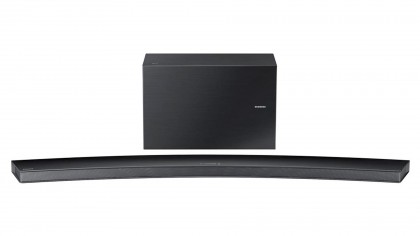
Wireless soundbars
Price: From £150
On that note, you might also want to consider a soundbar. While the 'main' aim of one of these long, low-profile speakers is to improve the sound of rubbish TV speakers, most of them are also prepped for streaming.
Many have Bluetooth, which enables you to stream any audio from your phone, laptop or tablet. However, a few more expensive models also have Wi-Fi. This will mean they either support something like Spotify Connect, or hook into a wider wireless infrastructure offered by the manufacturer.
A good example of this is the £679.99 Samsung HW-J8500, which has inbuilt Wi-Fi to enable it to communicate with Samsung's other multi-room speakers.

Spotify Connect
Price: £9.99 a month
Okay, we know it's not an actual streamer, but Spotify Connect is a super-important part of the puzzle. Particularly if you're on a budget but still fork out for Spotify, this offers one of the best wireless experiences around, just because it's so simple.
Spotify Connect uses Wi-Fi, but avoids all of the complexities of other Wi-Fi systems because you just select the speaker to pipe audio through to in the Spotify app. For many people, this will be just as good as a 'full' multi-room system, even though you only ever select one speaker to send audio through to.
The range of Spotify Connect speakers out there is massive – from the cheap and cheerful Philips SW750M, available for as little as £45 at the time of writing, to the stunning and totally odd £1,700 B&O Play A9, which looks a bit like a Cubist's take on a dinner table from some angles.
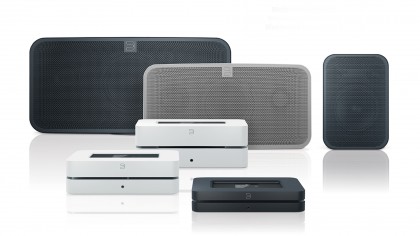
Bluesound
Price: From £269 (Amazon)
Remember how music snobs used to universally look down on digital audio? The tables have a turned now, with the latest Hi-Res codecs offering higher-quality feeds that match SACD, an incredibly niche format which had the capacity of a DVD but only stored audio.
You don't generally get a sniff of these Hi-Res formats when you talk about streamed audio. Even with aptX Bluetooth, the quality of streaming is much lower, and only a few streaming services offer lossless audio, let alone Hi-Res stuff.
One company bringing the lot to your lounge is Bluesound. It's a 24-bit system that's home to a whole bunch of speakers and traditional-looking hi-fi gear. It's the natural step above Sonos for audio obsessives, but it's a bit more expensive, and the software isn't as friendly.
For the well-heeled looking to go stream-friendly, though, it's top-drawer. The speaker unit to look at is the £599 Pulse 2, while Bluesound also makes a streaming amp, the £699 Powernode 2. This lets you pick your own hi-fi speakers. There's even the £999 Vault 2, which will also rip your CDs.
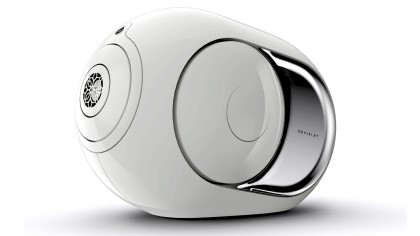
Devialet Phantom
Price: From £1,399 (Devialet direct)
One of the aims of many streaming audio systems is to take the bulk out of home audio. Part of that is about doing away with wires trailing across floors, but the boxes themselves are also generally much, much smaller.
The Devialet Phantom series takes this idea to the next level, using a pressurised speaker enclosure so that the drivers can be driven with a force you just wouldn't expect given that it's only 250mm-odd wide and tall.
And these are not innocuous little boxes for those precious about the minimal look of their lounge – they're eye-catching, looking rather like alien technology.
You can get a standard Phantom for £1,399 or an even more powerful, louder version for £1,690. The USP here is epic bass from a small box. These speakers have Wi-Fi and Bluetooth, but to use them as a house-filling system you'll need the separate Dialog box, which enables you to control up to 24 speakers. Doing the calculations that's… yep, a scary amount of cash.
Services supported by the native Spark app system are very limited right now. There's only Tidal, Deezer and Qobuz, which are the main Hi-Res streaming contenders. More are coming, though, and you can still stream just about anything outside of the official app.
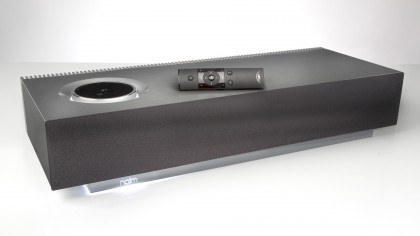
Naim Mu-so
Price: From £595 (Audio Affair)
One other system worth checking out for the real audio fan is Naim Mu-so, a small family of perfectly formed speakers. Unlike the Devialet systems, Naim has gone for a very lifestyle-friendly look that isn't in danger of looking too try hard
Right now the Naim Mu-so is one of the better wireless speakers around. It's a flat-ish £895 rectangle, similar in shape to a soundbar, although it's not designed to have a TV plonked on top. Also available from March will be the smaller, squarer £595 Muso QB.
These speakers support just about every common standard: Bluetooth with aptX, Spotify Connect, AirPlay, wired inputs, uPnP/DLNA and the audio nerd favourite Tidal. The Mu-so feels like a system that's a full hi-fi rather than just a wireless speaker.
You get multi-room support too, with Naim's Mu-so software enabling you to control up to five Mu-so speakers through its app.

Andrew is a freelance journalist and has been writing and editing for some of the UK's top tech and lifestyle publications including TrustedReviews, Stuff, T3, TechRadar, Lifehacker and others.